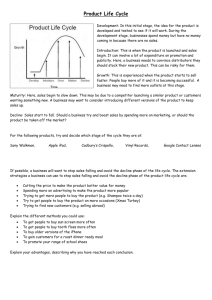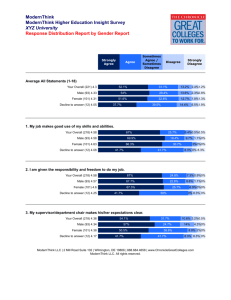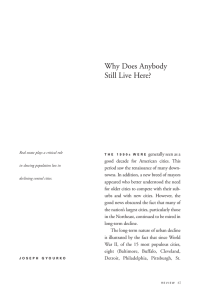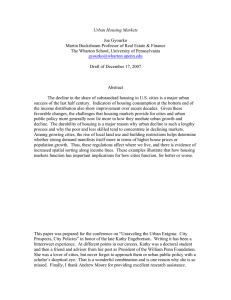Dalglish & Miller – Global Lead – Chpt 10
advertisement
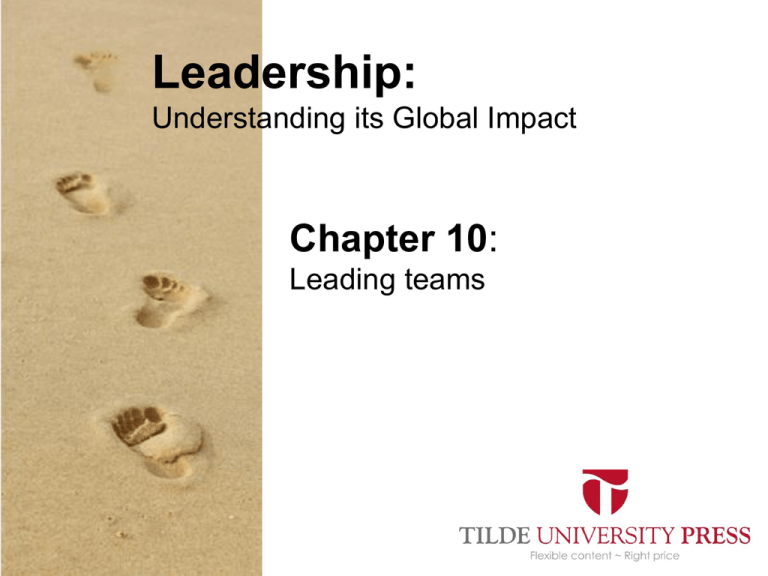
Leadership: Understanding its Global Impact Chapter 10: Leading teams Learning objectives • Explain the difference between groups and teams • Describe and understand the dynamics of different types of teams • Explain the stages of team development and signs of decline • Understand the leader’s role in a teambased organisation • Develop a practical plan to improve team performance 2 Chapter contents • • • • • • • • • • • • 3 Spotlight: Michael K. O’Loughlin Introduction Groups and teams Types of teams How teams develop and decline Characteristics of effective teams Leader in action: André Smit Measuring team member strengths and weaknesses A practical framework for team improvement Reflection Summary Case study: ING Group Spotlight: Michael K O’Loughlin • Provides practical examples of two significant issues in team dynamics—team values and shared leadership • Team leaders must have team values, be role models, and conduct themselves according to team rules and norms 4 Introduction • Last few decades … an increase in the formation of teams • Trend towards development of selfmanaged teams • Chapter concentrates on need for leaders to understand the role they play in developing successful and effective team work • Do teams make leadership an irrelevant concept? 5 Groups and teams • Groups are a collection of individuals working together • Teams are committed to a common purpose • Sub-cultures can develop within a team • While a team is a group, not all groups are teams 6 Types of teams • The four types of teams – functional teams – cross-functional teams – self managed teams – global and virtual teams • They are distinct in their membership, their duration, and in the way they can influence their mission 7 How teams develop and decline • Two theories for describing the stages of development: – punctuated equilibrium Gersick 1988 – Tuckman’s four-stage model Tuckman 1965; Tuckman &Jensen 1977 8 Changing leader style and roles as a team develops 9 Declining organisations • Collins 2009 - a descriptive model to illustrate how previously successful organisations decline • Five sequential stages of decline • The way managers and leaders interact can predict the state of an organisation and the teams • By observing signs of decline leaders can detect declining team situations and take action to reverse the curve 10 Characteristics of effective teams • People look up the hierarchy for clues about how to behave • Hughes, Ginnett &Curphy 2006, a team’s failure can often be traced to the moment it was established • Four characteristics: – – – – 11 task structure team boundaries norms leadership Leader in action: André Smit • For leaders who need to lead teams that comprise of people from diverse nationalities: – Encourage ownership and empowerment – Leverage experiences – Promote from within 12 Measuring team-member strengths and weaknesses • Margerison & McCann 1995: ‘Team Management Systems’ • Identified eight core ‘work functions’ • People tend to assume the role they naturally prefer and therefore perform better in those areas • Team Management Profile Questionnaire (TMPQ) – nine functions/roles • For a team to be effective, need to concentrate on each of these team functions and roles 13 A practical framework for team improvement • As new leader takes responsibility, there is a window of opportunity to move the team forward • Existing teams - much more difficult as the culture of the team will likely resist any significant efforts for change • Two types of change program: – major change programs and – small-scale, incremental programs • Eight steps outlined 14 Summary • A team is a group but not all groups are teams; teams are task focused • Trend for cross-functional teams • Self managed teams also popular • Teams progress through a number of stages: – ‘Forming, conforming, storming and performing’ – A number of behaviours indicate whether a team is in decline or moving through the development stages • Leaders do, and will, continue to play a critical role in leading all types of teams 15 Case study: ING Group • List the initiatives used by Harry Stout in developing a team-based organisation. Could these initiatives be implemented in the organisation you work in or one you know of? List the reasons the initiatives may or may not be appropriate. • How might Collins’s declining team theory be used by ING to identify whether the three teams are failing to progress towards their stated objectives? • Examine the organisation you work in or one you know of. How could the cross-sectional team structure or the rotating team structure used in ING be implemented in the organisation? What issues would you allocate to the team(s) structured in this way? 16
